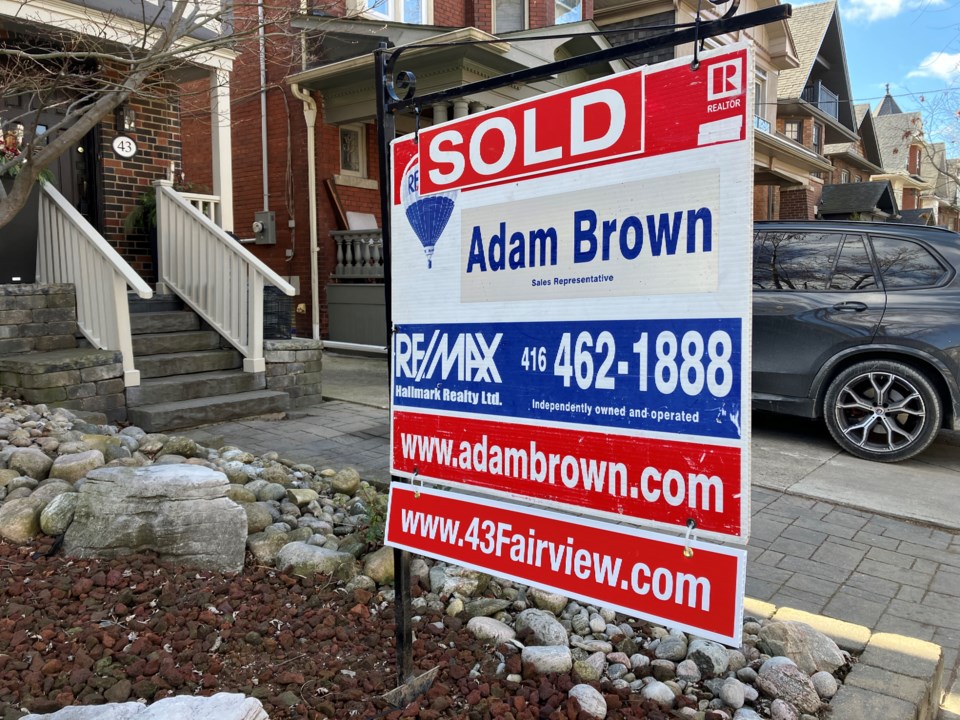There was reason for optimism in Simcoe County’s housing market last month, a local real-estate association says.
The Barrie and District Association of Realtors (BDAR) recently released its latest round of monthly statistics, which show year-over-year growth in many aspects of the market. In January 2025, home sales in Simcoe County totalled 480 units, a 27.7-per-cent jump from 376 in the same month last year. The average sale price reached $841,757, a 6.6-per-cent increase from January 2024.
"January’s market performance sets a positive tone for the year ahead," BDAR chair Robin Jones said. "With rising sales, strong price growth, and a significant increase in new listings, Simcoe County continues to attract buyers while offering greater opportunities for sellers."
Other positive market indicators include a surge in new listings (1,419 properties hit the market last month, up 29.7 per cent year-over-year), active listings (climbed 78.2 per cent year-over-year to 2,536) and months of inventory (rose by 39.6 per cent to 5.3 in January).
Specifically within Bradford last month, 23 homes were sold — actually down 23.3 per cent from January 2024. However, the year-over-year sales price rose by 35.3 per cent, to $1.38 million.
Meanwhile, new listings (77) rose by 63.8 per cent year-over-year. Active listings (96) and months of inventory (4.2) showed substantial growth compared to January 2024, at 65.5 and 115.9 per cent, respectively.
Innisfil’s year-over-year trend shows growth across the board, with the number of units sold (38), average price ($908,355), new listings (176), active listings (293) and months of inventory (7.7) each rising by 31, one, 47.9, 86.6 and 42.4 per cent, respectively.
Here’s how three other municipalities within BDAR's coverage area fared last month:
- Barrie — Overall, 165 homes sold in January, up 17 per cent from the same month the year prior. The average sale price was $760,575 last month, a climb of 4.2 per cent from one year ago. New listings grew 24 per cent to 398 over that span, as did active listings (62.3 per cent to 560) and months of inventory (up 38.7 per cent to 3.4).
- Essa — Fourteen units sold (tied with figures from a year ago) for an average of $757,893 (down 8.2 per cent). New listings rose 17.1 per cent to 48, active listings jumped 57.8 per cent to 71, and there were 5.1 months of inventory, up 57.8 per cent from January 2024.
- Orillia — Twenty-eight units sold (a 33.3-per-cent climb) for an average of $626,196 (down .3 per cent). Numbers grew, however, for new listings (3.6 per cent to 58), active listings (79 per cent to 111) and months of inventory (34.3 per cent to four) versus January 2024.
Ontario real estate prices marked a year of stability in January, figures released recently by the Canadian Real Estate Association (CREA) show.
On a year-over-year basis, the average single-family home in the province sold for $960,300 in January, up 1.3 per cent from the average of $947,700 they sold for in the same month of 2024.
The numbers are seasonally adjusted and do not take inflation into account.
Inflation, depending on what measure you choose, is running at between 1.9 and 2.7 per cent.
In a release, CREA senior economist Shaun Cathcart pointed to nervousness about U.S. tariffs as a dampening factor in sales.
“The standout trends to begin the year were a big jump in new supply at an uncommon time of year, as well as a weakening in sales which only showed up around the last week of January,” he wrote.
U.S. president Donald Trump's threats of tariffs, which escalated to threats of annexation, began around the time of his inauguration in the first week of January.
“The timing of that change in demand leaves little doubt as to the cause — uncertainty around tariffs. Together with higher supply, this means markets that had been steadily tightening up since last fall are now suddenly in a softer pricing situation again, particularly in British Columbia and Ontario.”
On a province-wide basis, prices for condos in a year-over-year comparison fell 2.5 per cent, and townhouses were steady at a .9-per-cent increase.
“While we continue to anticipate a more active spring for the housing sector, the threat of a trade war with our largest trading partner is a major dark cloud on the horizon,” wrote CREA chair James Mabey. “While uncertainty about the economy and jobs will no doubt keep some prospective buyers on the sidelines, a softer pricing environment alongside lower interest rates will be an opportunity for others."
BDAR represents more than 1,600 real-estate professionals in the Barrie and Simcoe County area. For more, visit bdar.ca.
Use the interactive below to explore your region.
